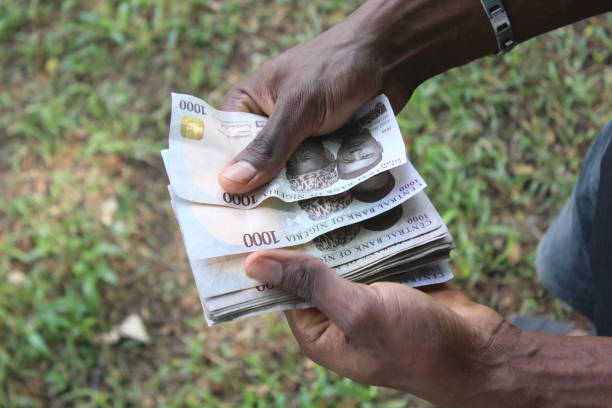February 2022 Records a Fall in the Circulation of Nigeria’s Currency by N37.84 billion
- Posted on March 28, 2022
- Investing
- By Faith Tiza

Nigeria's currency in circulation declined by N37.94
billion in February to N3.25 trillion, down from N3.29 trillion in January
2022.
On a month-to-month basis, this reflects a 1.2 percent
decrease, but when compared to the same period in 2021, it climbed by 16.95
percent, from N2.78 trillion in February 2021.
This is based on statistics from the Central Bank of
Nigeria's money and credit report (CBN).
Since the Central Bank maintained its dovish monetary
strategy as a means of ensuring the nation's economy's recovery following the
recession recorded in 2020, caused by the covid-19 pandemic, Nigeria's currency
has seen a tremendous rise.
Several intervention strategies were said to have
boosted money in circulation to its greatest level in history in December 2021.
However, it has dropped for two months in a row, falling by N37.13 billion in
January and N37.84 billion in February 2022.
Credit
in the private sector increased by N1.46 trillion
In February, bank credit to the private sector climbed
by N1.46 trillion to N36.91 trillion, up from N35.45 trillion the previous
month. This reflects a month-over-month increase of 4.1 percent.
This is much larger than the N257.45 billion gain
reported the previous month, thanks largely to the CBN's borrowing program to
encourage economic growth.
Meanwhile, cash outside of banks was N2.73 trillion in
February 2022, down 1.7 percent from N2.78 trillion the previous month,
indicating a loss of N47.53 billion.
Bank credit to the government increased by 4.5 percent
in February 2022, rising from N14.28 trillion in January 2022 to N14.92
trillion in February 2022.
The Central Bank's measures to promote the economy
could be blamed for the increase in lending to both private and government
parastatals. In addition, technological advancements and an increase in the
number of FinTechs in the lending industry have increased competitiveness.
What
the CBN has to say
The CBN disbursed N29.67 billion between January and
February 2022 under the Anchor Borrowers' Programme (ABP) for the acquisition
of inputs for maize, rice, and wheat production, according to the communique of
the recent 284th MPC meeting.
These payments raise the overall number of smallholder
farmers in the program to almost 4.52 million, cultivating 21 commodities
across the country, for a total of N975.61 billion.
Also, the apex bank issued N19.15 billion under the
Commercial Agriculture Credit Scheme (CACS) to fund 5 large-scale agricultural
projects, increasing the total disbursements under the Scheme to N735.17
billion for 671 projects in agro-production and agro-processing.
In addition, the Bank disbursed N428.31 billion to 37
new projects in the industrial, agricultural, and services sectors through the
N1 trillion Real Sector Facility.
In addition, the Bank has disbursed N29.51 billion to
31 projects, including 16 in manufacturing, 13 in agriculture, and 2 in
healthcare, under the 100 for 100 Policy on Production and Productivity (PPP).
Six members of the Central Bank's Monetary Policy
Committee (MPC) decided to preserve the MPR at 11.5 percent while maintaining
other parameters. Three members voted to raise the MPR by 25 basis points,
while just one member voted for a 50-basis point increase.


Be the first to comment!
You must login to comment